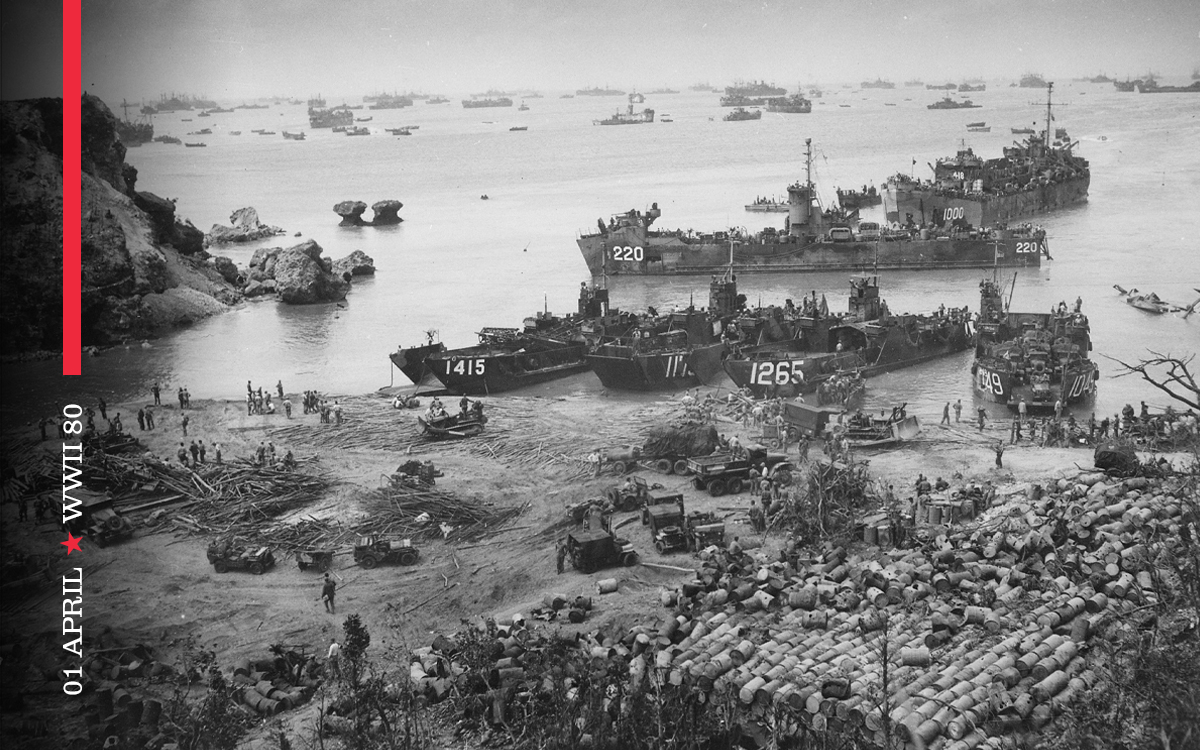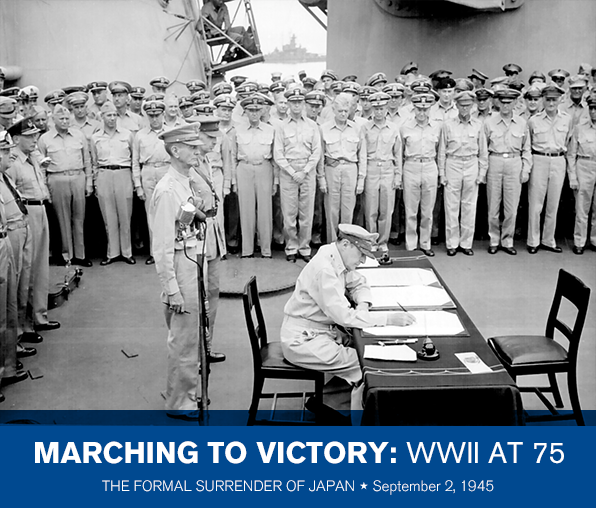WWII 80: The Battle of Okinawa | April 1, 2025
WWII 80: Highlights from the Truman Library
The Battle of Okinawa
April 1, 1945
Easter Sunday, April Fools’ Day, and codenamed “Love Day” by U.S. forces – must have seemed an unwarlike day for starting a major military operation. Yet it was on that date that American troops landed on the Pacific island of Okinawa, initiating one of the bloodiest and most important battles of World War II.

WWII 80: The Formal Surrender of Japan | September 2, 2020
WWII 80: Highlights from the Truman Library
The Formal Surrender of Japan
September 2, 1945
It is Sunday, September 2, 1945. Some 280 Allied warships and thousands of troops are staged in Tokyo Bay. On the deck of one vessel, the battleship USS Missouri, General Douglas MacArthur and 50 other Allied leaders are assembled. It is not a battle they have prepared for, however, but a brief ceremony. The men aboard the Missouri are about to witness Japan’s formal surrender. Read More


